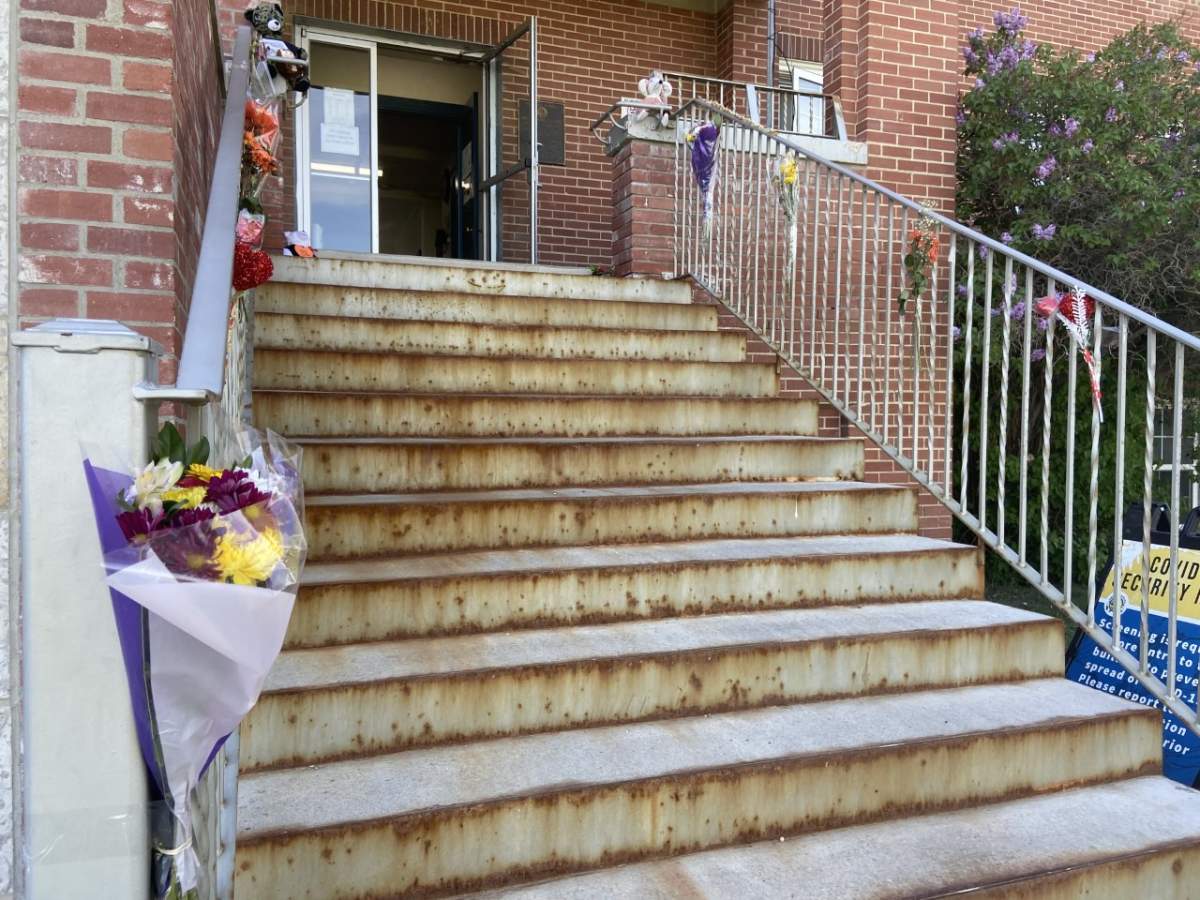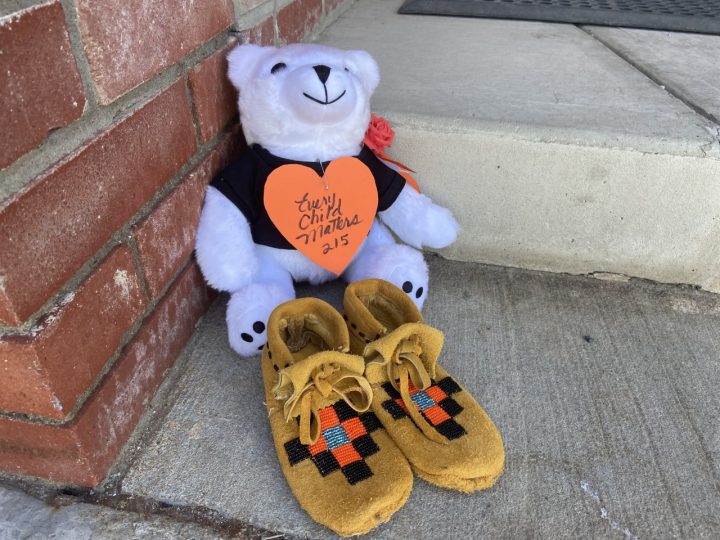Warning: Some of the details in this story may be disturbing to some readers. Discretion is advised.

Experts, residential school survivors and those whose lives have been touched by the system believe unmarked graves could be found on the grounds of residential schools across the country, including in Alberta.
The calls for more searches come after the remains of 215 children were found in a mass grave on the grounds of a Kamloops, B.C., residential school.
For Vernon Watchmaker, grand chief of the Confederacy for Treaty Six, the discovery didn’t come as a surprise, but rather a reminder of the graves that he says residential school survivors and their families already knew were at their schools.
“Knowing the exact number (of bodies), that’s the alarming part of it,” Watchmaker said.
“With the other schools that are in Alberta and across the country, it’s something that needs to be looked into.”
The remains found in B.C. were undocumented deaths, meaning they’ve been added to Canada’s previous total of roughly 4,100 documented cases of children dying while attending a residential school.
Vincent Yellow Old Woman attended a residential school on the Siksika First Nation in Alberta for nine years and was sexually and physically abused during his time there.
He said sites were pointed out to him that he believes could be burial sites for children.
“I am so tired of people saying: ‘Move on. Get over it,'” he told Global News on Monday. “It was not the government of Canada that found those graves. It was the hard and persistent work of native people.
“At the end of the day, if they don’t find anything here, that’s good. But if they find graves, somebody needs to be accountable.”
Butch Wolfleg attended the same residential school from 1956 to 1958. He also said he believes it’s likely children could be found buried on the grounds.
“The thing I remember is always being watched, being checked whether we were speaking our language,” Wolfleg said.
“Sometimes the rules were made up as they were going along, so you never really got a handle on what the rules were.”
He said learning of the children’s remains being found in Kamloops brought up a lot of emotions, and he had to take a drive “and have a good cry.”

Kisha Supernant, an associate professor in the department of anthropology at the University of Alberta, works with the technology that was used to find the graves in Kamloops. It’s called penetrative radar and she believes it could help in uncovering more sites at other schools, provided other First Nations communities want the investigations done.

Get breaking National news
“I think we can anticipate every residential school having at least one, and probably more, areas where children might be buried.”
“It is a massive undertaking to cover the ground that is needed, and then to do the work that communities want to be done around identifying these children,” she said.
Supernant, an Indigenous woman and mother, said the work is taxing, and must be done with great care and respect.
“I think it’s really important that, as much as possible, we listen to and take direction from Indigenous leaders and communities around this work and then draw on the expertise that does exist in the various scientific methods that could be used.”
How does penetrative radar work to find graves?
Using a penetrative radar involves dragging an antenna across the ground while it sends a signal downward, looking for changes in the soil, Supernant said.
“How it can be used to find graves is when you dig a grave, the soil itself changes because you’ve dug that grave. And when you pull a ground-penetrating radar across it, it can actually see the grave shaft,” she said.
“And potentially, if there’s a coffin burial, it may be able to detect the coffin. It does not, itself, see bodies.”
With strong methods, Supernant said experts can confidently distinguish between a grave and another kind of pit.
“Some people imagine, like, an X-ray — it’s not that, it really is talking about disturbances to the soil,” she said.
“And if they’re in a row and they’re regular (and) they’re six feet deep, we can say with great confidence that those are most likely to be graves.”
‘Increasingly urgent’ investigations
At least 25 residential schools operated in Alberta from 1893 to 1996. Records show 729 children died while attending residential schools in the province.
According to Reconciliation Canada, 90 to 100 per cent of residential school attendees were physically, sexually and emotionally abused. The schools also had a 40 to 60 per cent mortality rate.

The penetrative radar is “an important next step” in filling in the gaps of the country’s residential school records, which are largely incomplete, and bringing more of the truth to light, Supernant said.
“It is become increasingly urgent — although communities have been calling for this for a very long time — but I think now is a time to really support communities in the work that they might want to do around their schools,” she said.
Supernant said it’s important to note that many of the schools had children from multiple First Nations, as well as Métis children, so the investigations could be complex.
“I think we also have to be really attentive to the fact that some communities might not be ready to have this equipment on the ground tomorrow — that there’s a process that needs to be community-led, that needs to be engaged around what are the things that need to happen, what are the ceremonies that need to be in place? How can we support survivors and their families as this work happens?”
The government of Alberta said Monday it was committing money to help First Nations research undocumented deaths and burials “of hundreds of children who did not make their way home.”
Indigenous Relations Minister Rick Wilson said the details of the funding would be released “in the coming days.”
“Finding their graves is a matter of reconciliation and another step toward closure for families,” he said.
“Many of the schools have been destroyed and while their general location is known, the exact co-ordinates are missing. It is also possible that children were buried in locations such as nearby churches.”
Supernant said that’s great progress, but that the majority of the onus in uncovering more of the country’s undocumented residential school deaths lies with the federal government.
Prime Minister Justin Trudeau promised “concrete action” on Monday and in the wake of last week’s discovery. He added that he plans to speak to his cabinet ministers about “things we need to do to support survivors and the community.”
“We are looking for how we can support Indigenous communities in their grief and in their request for answers,” he said.
“I know there will be many, many discussions to be had in the coming days and weeks about how we can best support these communities and get to the truth.”
Survivors of the residential school system can get support through Canada’s Indian Residential Schools Resolution Health Support Program 24/7 crisis line by calling 1-866-925-4419.
— With files from Carolyn Kury de Castillo, Rachel Gilmore and Katie Dangerfield, Global News










Comments